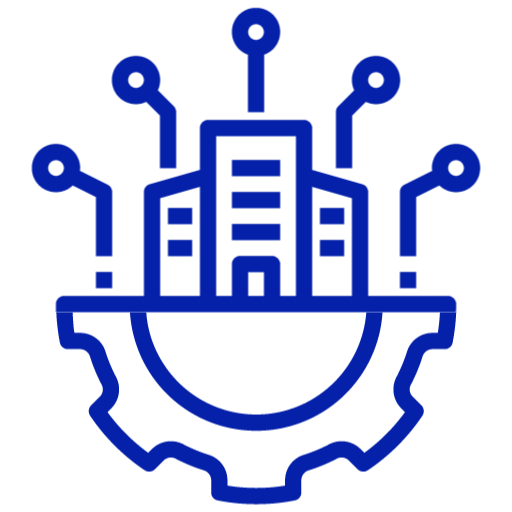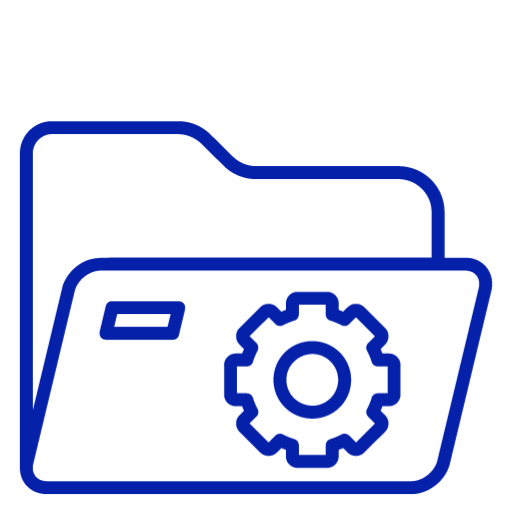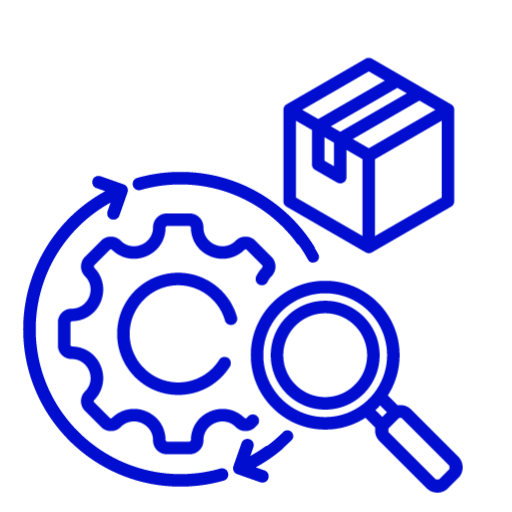
In lifesciences industry, maintaining a detailed equipment logbook is essential to keep equipments running smoothly to avoid costly downtime and safety risks. An Equipment Sequential Logbook is a useful tool for optimizing equipment performance. By keeping detailed records of maintenance and usage, organizations can identify patterns, schedule preventive maintenance, and ensure safety measures. This proactive approach helps reduce unexpected breakdowns and promotes efficient operations.
What is an Equipment Sequential Logbook?
In any industry where machines and equipments are crucial, keeping everything running smoothly is super important. When machines break down and stop working, it can hike expenses, disrupt work, and sometimes lead to dangerous situations.
An Equipment Sequential Logbook is a great tool to help organizations keep their equipment working well and avoid these problems.
- Operation and Cleaning: In the equipment sequential log, the “operation” activity meticulously tracks each batch’s performance on the equipment, noting activity details, duration, and timestamps. Similarly, “cleaning” entries record the thorough cleaning and sanitization of equipment between or after use, ensuring compliance with regulatory standards. Each entry includes the cleaning procedure, date, time, and any pertinent observations regarding equipment cleanliness.
- Preventive Maintenance: By identifying trends in usage and performance, you can schedule maintenance before problems arise, preventing unexpected downtime and extending equipment lifespan.
- Regulatory Compliance: Certain industries, like pharmaceuticals, have strict regulations regarding equipment use and maintenance. A well-maintained logbook demonstrates adherence to these standards.
- Breakdown: A breakdown recorded in an equipment sequential log indicates when equipment malfunctions or experiences a failure during batch operations. Each entry in the log captures details like the type of breakdown, which equipment was affected, the timestamp of the incident, and the steps taken to resolve the issue. This documentation is crucial for tracing problems and making maintenance more effective.
Challenges with Equipment Sequential Logbook
- Manual Data Entry Errors: The reliance on manual data entry for recording equipment usage, maintenance activities, and calibration results increases the risk of errors and inaccuracies in logbook entries. These errors can lead to compliance issues and impact the quality of pharmaceutical products.
- Equipment Downtime Tracking: Tracking equipment downtime accurately in real-time is crucial for identifying maintenance needs and minimizing production disruptions. However, logging downtime reasons promptly and coordinating maintenance activities without causing bottlenecks or delays can be challenging.
- Incomplete or Delayed Entries: Busy production environments and manual recording processes may result in incomplete or delayed entries in equipment logbooks. This can hinder the real-time monitoring of equipment status and maintenance schedules, leading to potential breakdowns or deviations from operating procedures.
- Shift Changes and Handovers: During shift changes, transferring responsibility for sequential logbook entries and ensuring continuity of data recording can be challenging. Miscommunication or inadequate handovers may result in gaps or discrepancies in logbook entries.
- Ensuring the Proper Check: Deviation is possible, particularly when cleaning is necessary post-batch completion. Users may overlook this task and move on to the next batch, risking product safety and efficacy.
How AmpleLogic Handle the Equipment Sequential Logbook in the production Area
Amplelogic is having a predefined control for cleaning the equipment/area before or after the operation. And ensuring the proper checks of Type A and Type B cleaning.
1. Shift Changes and Handovers: To manage shift changes effectively, implement a pause and resume feature in the equipment log with timestamps. Document actions taken during the transition to address reasons for interruption, ensuring traceability and continuity of operations.
2. Custom Report: generate a custom report that provides clarity on each activity recorded in the equipment sequential log, facilitating better decision-making, analysis, and compliance monitoring.
3. Forecasting the future data: Using past data, we can anticipate future trends. For instance, if historical data indicates frequent breakdowns of the autoclave from April 1st to 10th, we can predict a decrease in future breakdowns during this period. This proactive approach ensures smoother operations and reduces disruptions in the production process.
5. Incomplete or Delayed Entries: AmpleLogic features having end-to-end activity tracking system. If a record isn’t closed, pending tasks are displayed to the user. In case of delays, the system automatically triggers emails based on the organization’s hierarchy.
6.Manual Data Entry Errors: Electronic logbooks reduce manual errors by automating data entry and provide the interlocks. Features such as dropdown menus, pre-defined templates, and automated data capture helps to decrease transcription errors in electronic logbooks.
Significance of Equipment Sequential Logbook in Life Sciences
Ensures Compliance with Regulations
In the life sciences industry, adherence to regulations and standards is non-negotiable. An equipment sequential logbook ensures that all equipment-related activities comply with regulatory requirements. Whether it’s the Food and Drug Administration (FDA) in the United States or the European Medicines Agency (EMA) in the European Union, having a meticulously maintained logbook guarantees compliance.
Facilitates Quality Assurance
Maintaining a detailed logbook is crucial for quality assurance. It enables researchers and laboratory personnel to track the performance of equipment accurately. By recording every calibration, maintenance, and usage data, any deviations or irregularities can be quickly identified and rectified, ensuring the reliability and validity of experimental results.
Supports Traceability
Traceability is a vital aspect of laboratory operations. An Electronic logbook provides a clear trail of every activity performed on a particular piece of equipment. This includes calibration dates, maintenance procedures, and usage details. In the event of a malfunction or discrepancy, this traceability becomes invaluable in identifying the root cause and implementing corrective actions.
Enhances Efficiency
Efficiency is a hallmark of a well-run laboratory. With an equipment logbook, researchers and laboratory managers can efficiently plan maintenance schedules, prevent unexpected breakdowns, and optimize equipment usage. This, in turn, minimizes downtime and maximizes productivity.
Facilitates Research and Development
In the fast-paced world of life sciences, time is of the essence. A well-maintained equipment sequential logbook expedites the research and development process by providing accurate and reliable data. Researchers can trust the equipment’s performance history, allowing them to focus on their experiments without concerns about the equipment’s reliability.
Risk Management and Quality Assurance
Identifying and mitigating risks is vital in life sciences. A well-documented logbook helps in early detection of issues, ensuring product safety, and maintaining quality standards throughout the research and development phases.
Why eLogbooks Make Sense in Pharma
Traditional paper logbooks are prone to errors, data loss, and difficulty in maintaining a complete audit trail. eLogbooks offer a multitude of advantages:
- Improved Data Integrity: Electronic entries eliminate the risk of human error from handwritten logs. Time-stamped entries with electronic signatures provide an irrefutable audit trail, crucial for regulatory compliance with 21 CFR Part 11 [FDA electronic records and signatures regulations].
- Enhanced Efficiency: eLogbooks allow for quick data entry, filtering, and searching, saving valuable time spent sifting through paper records. Automated alerts and reminders ensure critical maintenance tasks are never missed.
- Real-time Visibility: With instant access to equipment history, technicians and supervisors gain valuable insights into equipment performance, enabling proactive maintenance and troubleshooting.
- Streamlined Collaboration: eLogbooks facilitate seamless information sharing across departments, ensuring everyone has access to the latest equipment data.
- Reduced Paperwork: Embracing a paperless approach minimizes storage space needs and environmental impact.
Conclusion
In summary, maintaining an equipment sequential logbook in life sciences is critically important. A well-maintained logbook is essential for upholding research integrity, meeting regulatory requirements, and promoting innovation. By accurately documenting experimental procedures, ensuring data traceability, and leveraging digital tools, organizations can improve research quality, reduce risks, and foster collaboration. Looking ahead, advancements in logbook technologies will continue to transform scientific documentation, enabling more efficient and transparent research practices. Embracing these practices not only benefits ongoing research endeavors but also sets the stage for future advancements in life sciences.



























